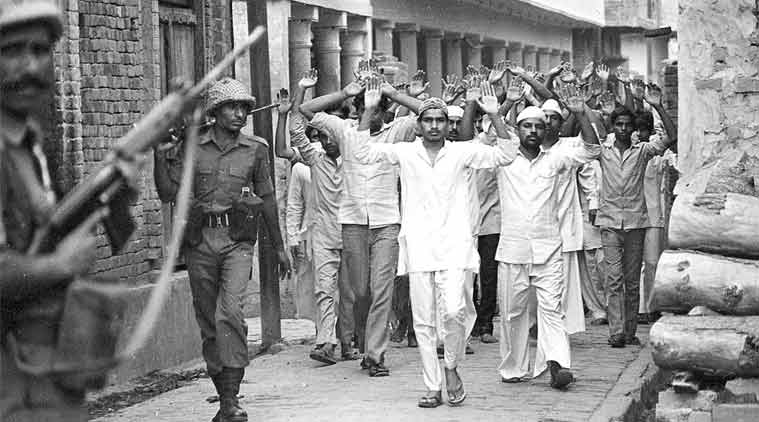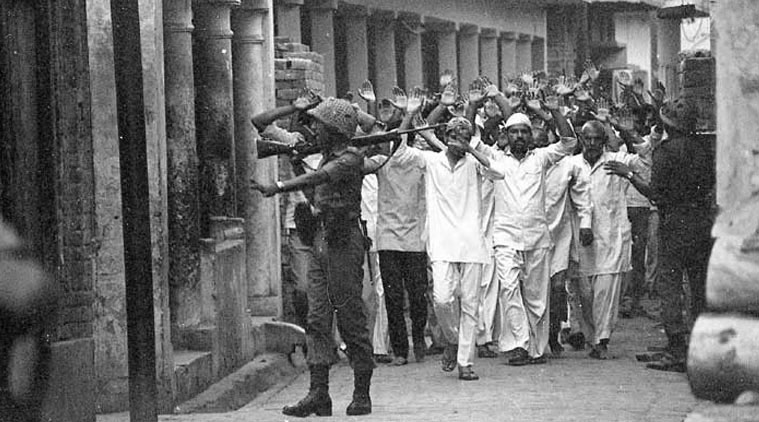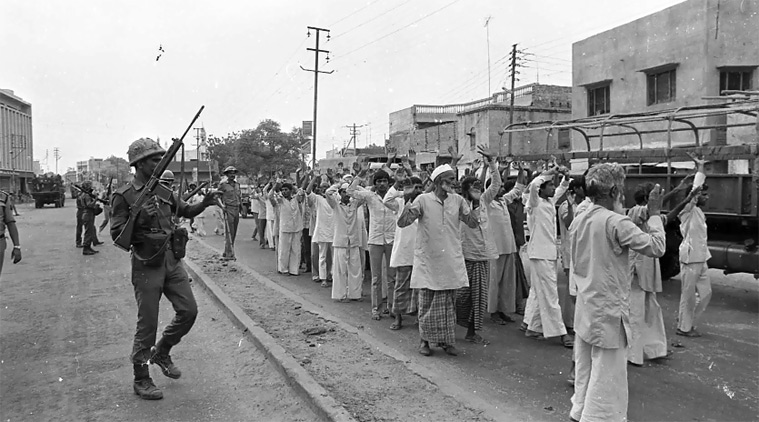 Hashimpura case: Delhi HC sentences 16 to life imprisonment for mass murder of 42 Muslims
Hashimpura case: Delhi HC sentences 16 to life imprisonment for mass murder of 42 Muslims
Thirty one years after the Hashimpura massacre near Meerut in Uttar Pradesh, the Delhi High Court Wednesday reversed a trial court acquittal order and sentenced to life imprisonment 16 personnel of the Provincial Armed Constabulary (PAC), who have since retired, for their role in the killing of 38 Muslims. It said “this case points to the systemic failure that results, not infrequently, in miscarriage of justice”.
Calling the actions of the PAC personnel on May 22, 1987 as “brutal and bone-chilling” — there were 19 accused but three died during the pendency of trial — the bench of Justices S Muralidhar and Vinod Goel made it clear that the life term awarded to each convict in this case means the “remainder of the person’s natural life”.
“This court recommends that every State Legal Services Authority should designate a Nodal Officer to address the needs of the victim families in the case of custodial killings or State excesses. The procedure put in place should ensure that such victims or the families are able to access and seek relief under the scheme and that such relief should not be limited to monetary compensation but other range of reliefs respecting the rights to basic survival and dignity of such families,” the bench said.
 Over 40 Muslims were killed in 1987, allegedly by PAC. (File Photo)
Over 40 Muslims were killed in 1987, allegedly by PAC. (File Photo)
Holding that the evidence before the court clearly established prior meeting of minds of the accused and careful planning in execution of the killings, the bench said this was “targeted killing by armed forces of the unarmed, innocent and defenceless members of a particular community… targeted killing revealing an institutional bias within the law enforcement agents in this case”.
The High Court directed the convicts to surrender on or before November 22, failing which the Station House Officers concerned will immediately take them into custody for serving the sentence awarded to each.
The trial court had acquitted them in the case on March 23, 2015 saying “it has not been proved beyond reasonable doubt” that the accused were PAC personnel.
Reversing the order, the High Court held the 16 accused “guilty of the offences with which they were charged viz., criminal conspiracy, kidnapping, murder, causing evidence of the crime to disappear… In arriving at this conclusion, we also relied on the additional evidence recorded, which was not available to the trial court”.
“We are conscious that for the families of those killed, this is perhaps too little, too late. They have had to wait for 31 years for justice. The monetary compensation they have received cannot make up for the lives lost. This case points to the systemic failure that results, not infrequently, in miscarriage of justice,” the bench said.
 May 1987: This photo shows Army personnel lining up a group of men from Hashimpura.
May 1987: This photo shows Army personnel lining up a group of men from Hashimpura.
The 73-page judgment details what transpired on the evening of May 22, 1987 in Hashimpura, an incident that left a “deep festering wound” : “Around 42 to 45 men, old and young, all Muslim, were rounded up by the PAC, packed into a truck and taken away. Each of them was shot by the PAC personnel with .303 rifles in cold blood and the bodies dispatched to a watery grave — some in the Gang nahar (Ganga canal) and the remaining in the Hindon river.”
“Five of them survived to recount the horrific tale. Of the 38 that were killed, the dead bodies of just 11 of them were able to be identified later by their relatives. The remaining bodies were not recovered,” the bench said.
“The present case is yet another instance of custodial killing where the legal system has been unable to effectively prosecute the perpetrators of gross human rights abuses. The prolongation of the trial for over two decades, compounded by the endemic systemic delays, have frustrated attempts at securing effective justice for the victims,” it said.
The High Court order came on three appeals — one filed by the State of Uttar Pradesh and two by the victims and their families including Zulfiqar Nasir, a survivor of the massacre. The High Court permitted the National Human Rights Commission to intervene in the matter and had ordered recording of additional evidence into the incident by the trial court.
 Muslims being led away in Hashimpura, May 1987. Praveen Jain
Muslims being led away in Hashimpura, May 1987. Praveen Jain
The High Court allowed BJP leader Subramanian Swamy’s plea to make public the original inquiry report into the Hashimpura massacre by the UP Crime Branch-Criminal Investigation Department (CB-CID) which was tabled before the State of UP in 1994, and said the same shall be placed on the state government’s website in a prominent place.
It rejected the demand for a SIT probe into the killings, saying “in the over three decades since the massacre, no significant developments are stated to have taken place, or leads unearthed, warranting the direction sought”.
Charges for the offences of murder, attempt to murder, tampering with evidence and conspiracy were framed against the accused by a Delhi court on May 24, 2006. The case had been transferred to Delhi on on a direction from the Supreme Court in September 2002 following a petition by the families of the victims and survivors.
The CB-CID, Uttar Pradesh had filed a chargesheet in a Ghaziabad court in 1996, nine years after the incident. Eighteen personnel of the PAC were arraigned as accused in the first chargesheet. The nineteenth accused was arraigned in a supplementary chargesheet.